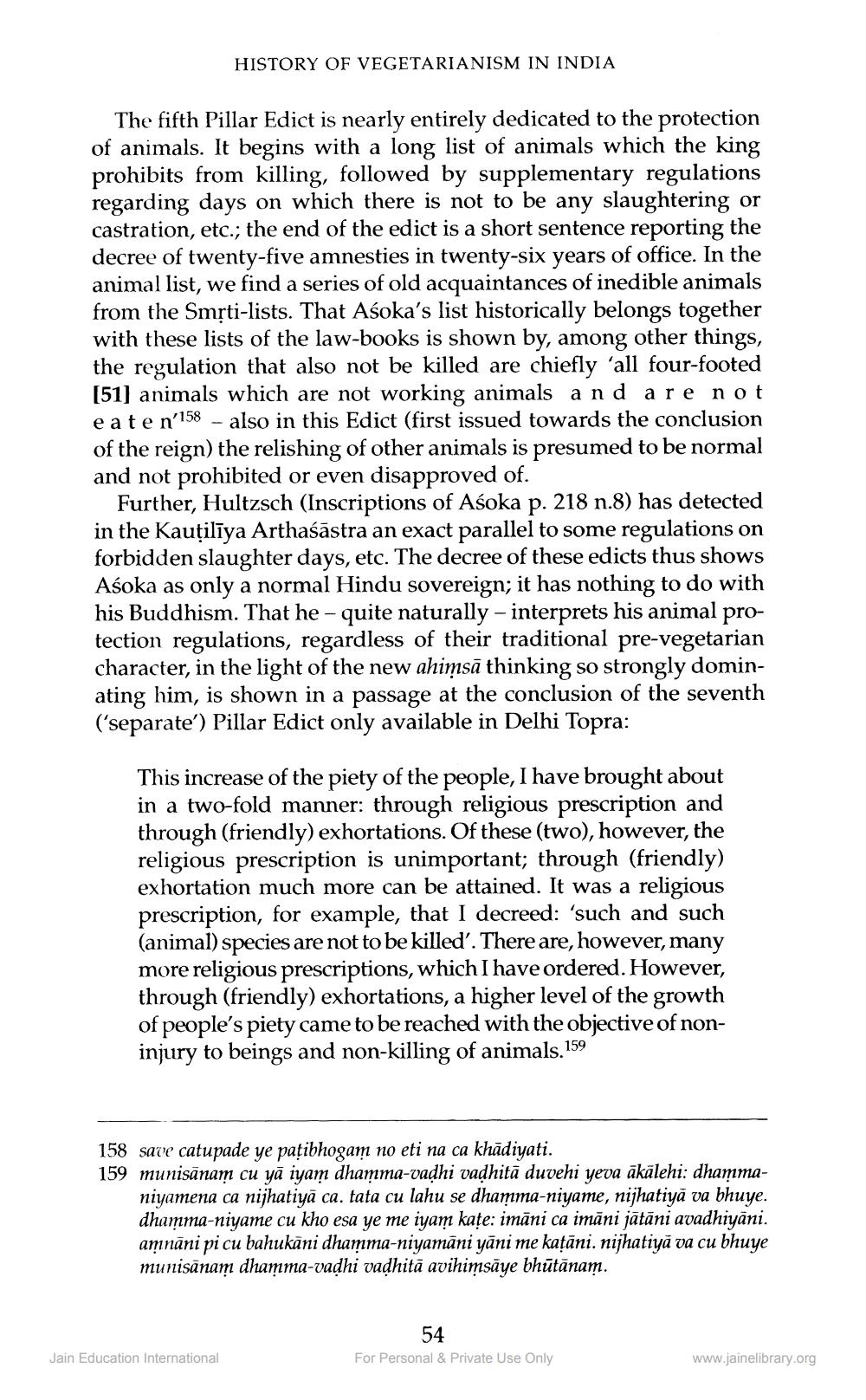________________
HISTORY OF VEGETARIANISM IN INDIA
The fifth Pillar Edict is nearly entirely dedicated to the protection of animals. It begins with a long list of animals which the king prohibits from killing, followed by supplementary regulations regarding days on which there is not to be any slaughtering or castration, etc.; the end of the edict is a short sentence reporting the decree of twenty-five amnesties in twenty-six years of office. In the
1 list, we find a series of old acquaintances of inedible animals from the Smộti-lists. That Asoka's list historically belongs together with these lists of the law-books is shown by, among other things the regulation that also not be killed are chiefly ‘all four-footed (51) animals which are not working animals and are not e ate n'158 - also in this Edict (first issued towards the conclusion of the reign) the relishing of other animals is presumed to be normal and not prohibited or even disapproved of.
Further, Hultzsch (Inscriptions of Asoka p. 218 n.8) has detected in the Kauțilīya Arthaśāstra an exact parallel to some regulations on forbidden slaughter days, etc. The decree of these edicts thus shows Aśoka as only a normal Hindu sovereign; it has nothing to do with his Buddhism. That he - quite naturally - interprets his animal protection regulations, regardless of their traditional pre-vegetarian character, in the light of the new ahimsā thinking so strongly dominating him, is shown in a passage at the conclusion of the seventh ('separate') Pillar Edict only available in Delhi Topra:
This increase of the piety of the people, I have brought about in a two-fold manner: through religious prescription and through (friendly) exhortations. Of these (two), however, the religious prescription is unimportant; through (friendly) exhortation much more can be attained. It was a religious prescription, for example, that I decreed: 'such and such (animal) species are not to be killed'. There are, however, many more religious prescriptions, which I have ordered. However, through (friendly) exhortations, a higher level of the growth of people's piety came to be reached with the objective of noninjury to beings and non-killing of animals. 159
158 save catupade ye pațibhogam no eti na ca khādiyati. 159 munisānam cu yā iyam dhamma-vadhi vadhitā duvehi yeva ākālehi: dhamma
niyamena ca nijhatiyā ca. tata cu lahu se dhamma-niyame, nijhatiya va bhuye. dhamma-niyame cu kho esa ye me iyam kate: imani ca imāni jātāni avadhiyāni. amnāni pi cu bahukani dhamma-niyamani yāni me katāni. nijhatiya va cu bhuye munisanam dhamma-vadhi vadhitā avihimsāye bhūtānam.
54 For Personal & Private Use Only
Jain Education International
www.jainelibrary.org




